Rare light-commercial versions of the Standard Vanguard
Posted by Chris Graham on 5th October 2023
Mike Neale tells the story of the light-commercial versions of the Standard Vanguard saloons, and meets a man with quite a collection.
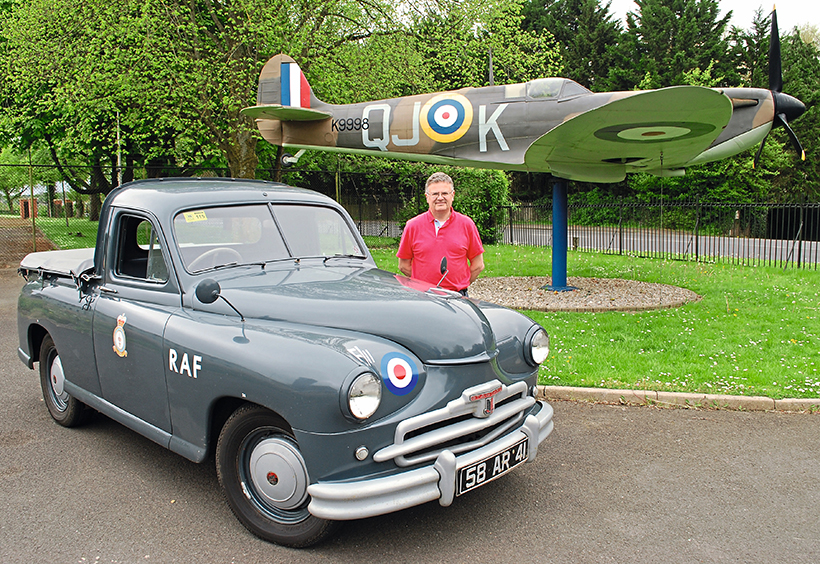
Standard Vanguard: Paul Robins’ 1952, petrol-powered Phase 1A Standard 12cwt pick-up.
The Standard Motor Company launched the Vanguard range in 1947, replacing the pre-war type Standard 8, 12 and 14 with a single model. The name came from 1940s British battleship, HMS Vanguard and, as well as a saloon, there was a pick-up, a van and an estate.
If you think that the styling looks American-influenced, you’d be right. Standard’s boss, Sir John Black, sent in-house body stylist, Walter Belgrove, to Grosvenor Square in London to find, sketch and photograph a Plymouth car outside the American Embassy as that was a design that Sir John admired.

The 1949 Phase 1 van was restored in blue and off-white, which turned out to be its original colours.
Belgrove duly drew-up designs with 120in, 108in and 102in wheelbases (the Plymouth’s was 117in). However, to Belgrove’s dismay, Sir John insisted upon a stubby 94in wheelbase on the advice of bean-counters that this would be cheaper to manufacture. An early mock-up in late 1945 looked like a much-shortened 1942 Plymouth, in particular its protruding wing shape.
By the launch, the design had been smoothed off and updated, the bulbous wings becoming blended flush into the bodywork, which looked proportionally better on the short wheelbase. Prototypes shown to the public in 1947 had a new 1,849cc four-cylinder, overhead valve, wet-liner engine, intended also for use in Ferguson tractors. By the time it went on sale in 1948, mostly for export, the Vanguard was fitted with a 2,088cc version of the engine, later also used in the Triumph Renown, Roadster and TR sports cars.
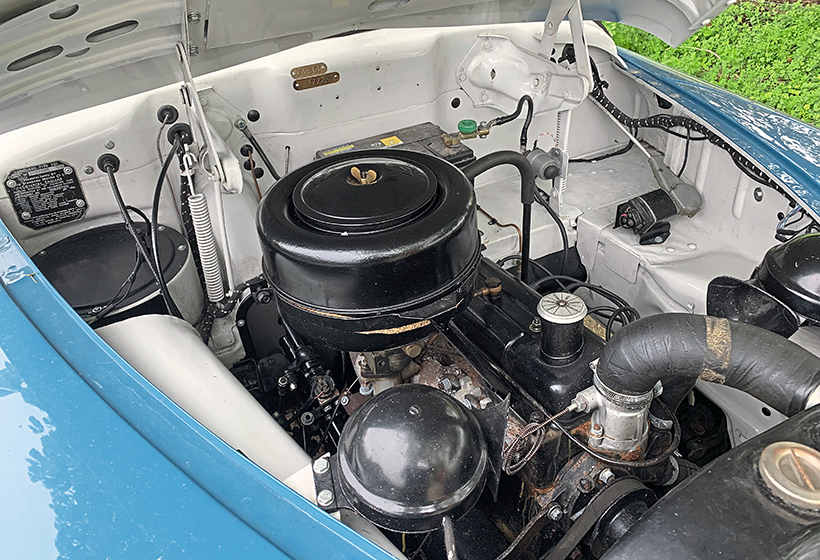
Typical no-nonsense engine bay of the period.
The three-speed all-synchromesh gearbox was also new, with a column change on the right of the steering wheel to maximise space for three occupants on the front bench seat. The problem with this, at least on RHD cars, was bashing your hand against the windscreen pillar when changing gear. It was changed to the left-hand side from late 1950. The gearbox itself had a very long life, albeit changing to a four-speed floor-shift for the Phase 3 Vanguard, being still in use in the Triumph Dolomite when the Canley factory closed in 1980.
There was a box-section chassis and independent front suspension with lever arm shock absorbers and coil springs. Car bodies were produced by Fisher & Ludlow, as Standard didn’t have the capability of producing these itself in Canley at that time, while the bodies of pick-ups, vans and estates were built by Mulliners of Birmingham. The first Vanguards had open rear wheelarches and sidelights incorporated into the headlights. Later, rear wheel spats were fitted and separate sidelights below the headlights.
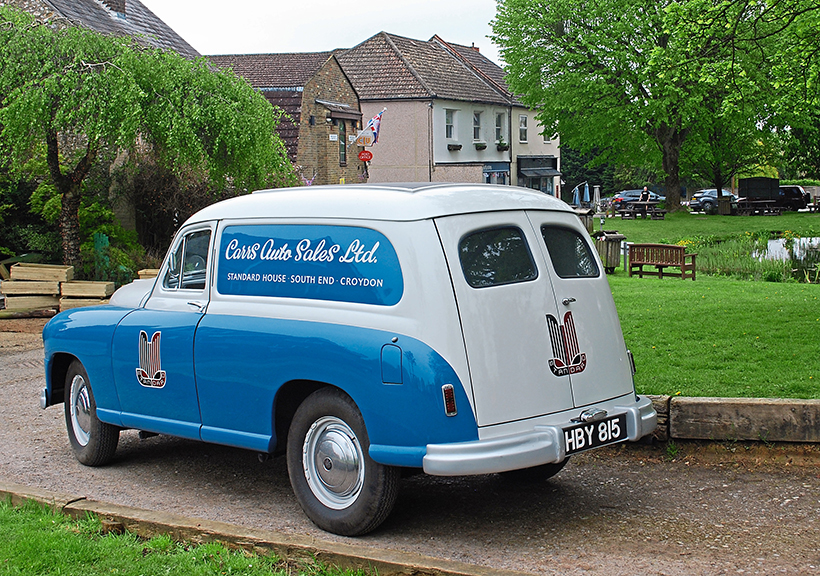
Rear view, in a rather nice and timeless rural setting.
A fleet of Vanguards!
Standard enthusiast Paul Robins has amassed quite a fleet of Phase 1 and 2 Vanguards, mostly via friend John Shearman. Paul’s first ever car was a petrol-engined Phase 2 saloon, bought in 1983 with just 23,000 miles on the clock, but with a seized engine. His dad, who had worked on engines and airframes in the RAF during World War II, helped him with it, beginning Paul’s enthusiasm for Vanguards. It took six months to get it on the road and it’s a very original car which Paul still owns.
He went on to acquire another Phase 2 petrol saloon, a Phase 2 diesel version (requiring major restoration) and a Phase 2 petrol estate (currently being restored). However, it’s the two commercial variants that are of relevance here; officially called the Standard 12cwt, rather than Vanguards. The van is a 1949 Phase 1, while the pick-up is a 1952 Phase 1A, and both are petrol-powered.
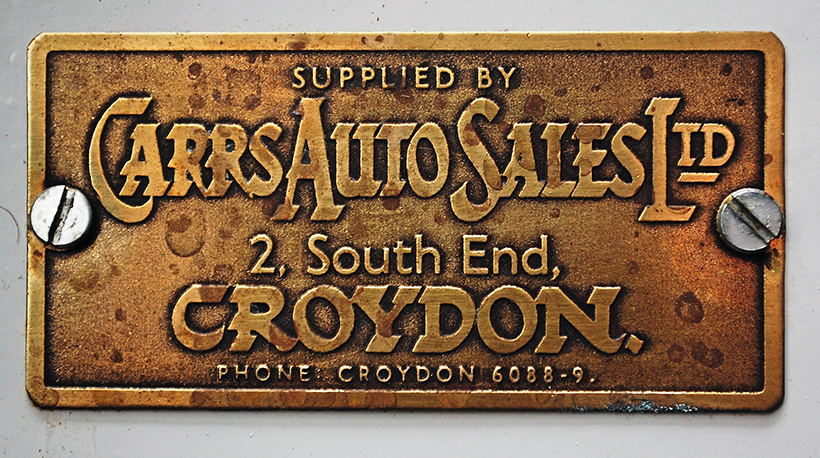
Original supplying dealer’s plaque. The van appears to have spent its whole life around Croydon.
The van is owned jointly with John. The pick-up isn’t technically Paul’s at all, being owned by John and another friend, Phil Gates, but is registered in Paul’s name and he maintains and drives it. To understand how this came about, we need to rewind to the early 1980s.
In November 1983, John found and bought the pick-up as a non-runner, but in solid, original condition. Then John heard about a very early van in a lock-up in Purley, Croydon, also a non-runner, and bought it to save it in April 1984, despite its deteriorated condition and the vendor asking more than it was then worth.
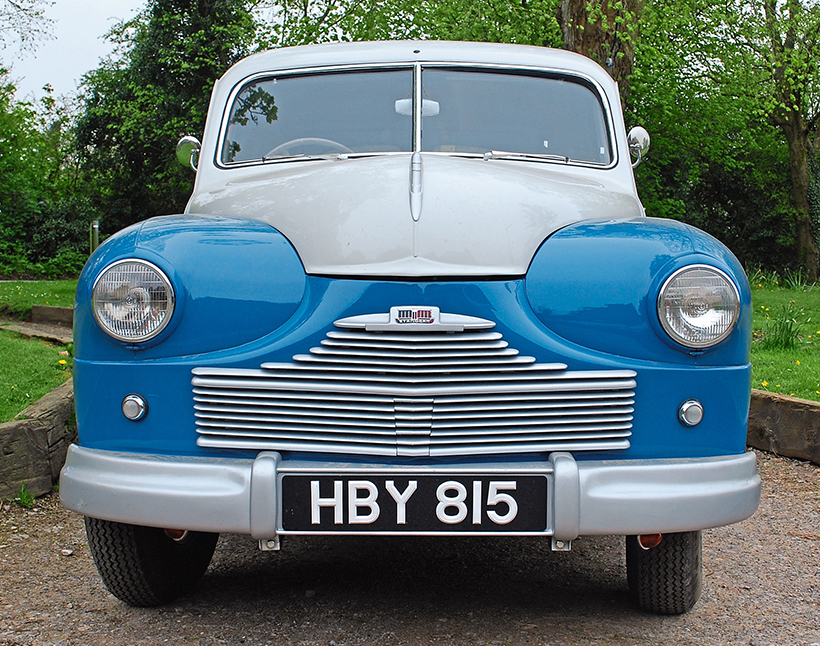
The van has the early, multiple-piece slatted grille and three-piece bumper, plus the Phase 1’s slightly higher bonnet line and low-profile emblem.
The back axle of the van had exploded. “I’m not sure how someone managed to break it as they are virtually indestructible!” jokes Paul. Both vehicles then sat in John’s sheds for several years, awaiting their turn for restoration.
In 2002, John’s friend, Phil Gates, mentioned that he would like to restore an old military ‘soft-skinned’ vehicle or a light commercial. John replied that handily he had a vehicle that satisfied both aspirations – the Vanguard pick-up being ex-RAF. Phil then funded the restoration from 2002 to 2007.

Loadspace. Noise does reverberate around the load area, even with a carpet added.
Nothing is known about its service history as the RAF didn’t keep any of the records. It had military registration – 58 AR 41 – but it isn’t known whether it served in the UK or overseas. The RAF had thousands of Vanguards. After being withdrawn from service, it was bought by a builder in North London and allocated civilian registration 321 FXO. If any readers know anything of the vehicle’s RAF history, or have photos of it in service, then we would love to hear from you.
Paul began looking after the pick-up about 10 years ago, having a real affinity with it because of his dad’s RAF history, as well as it being a Vanguard. Rather than leaving it anonymous, as he lives in Biggin Hill, Paul decided to add Biggin Hill fighter command logos. Inside the cab the original RAF contract plate and lettering survive.
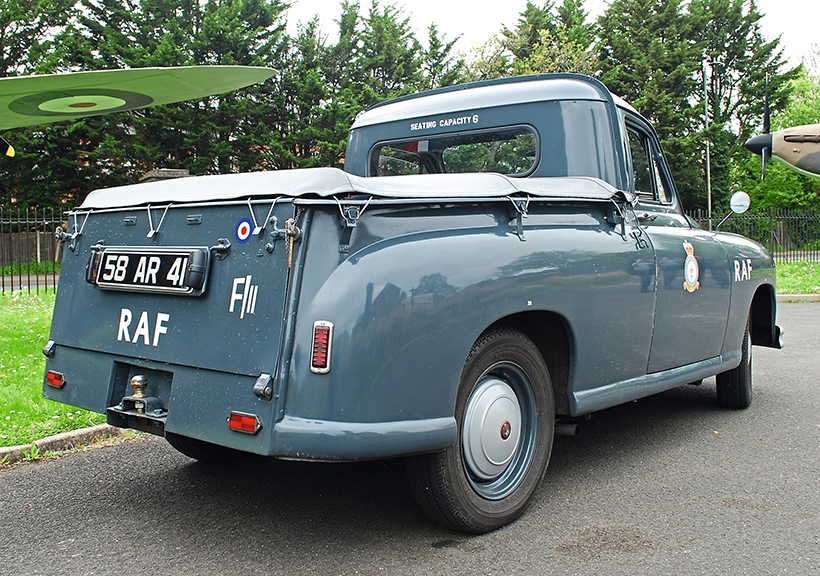
Early pick-ups had a shorter, more rounded rear end treatment than the later ones.
Moving onto the van, John began its restoration in 2012, with Paul subsequently becoming a part-owner when costs spiralled, supplementing John’s expenditure until it was completed in 2016. The van’s first owner was in Croydon, as was its second who used it for his radio repair business. He took it off the road, circa 1961, when the differential seized.
When John purchased the van, rescuing it from 20 years of damp storage, the entire body had become badly rusted, although the chassis remained solid. It was maroon and cream, but John realised that these were not the original colours. While rummaging through a box of old photos at a transport festival, he discovered a photo taken in 1950 at Croydon Airport showing a line-up of Vanguard service fleet vans in the livery of Carrs of Croydon, the Standard-Triumph dealers that had supplied HBY 815 new. Those vans had HBY registration numbers, one being HBY 809, just six numbers away from John’s van. Thus Carrs was the obvious choice of livery for HBY 815.
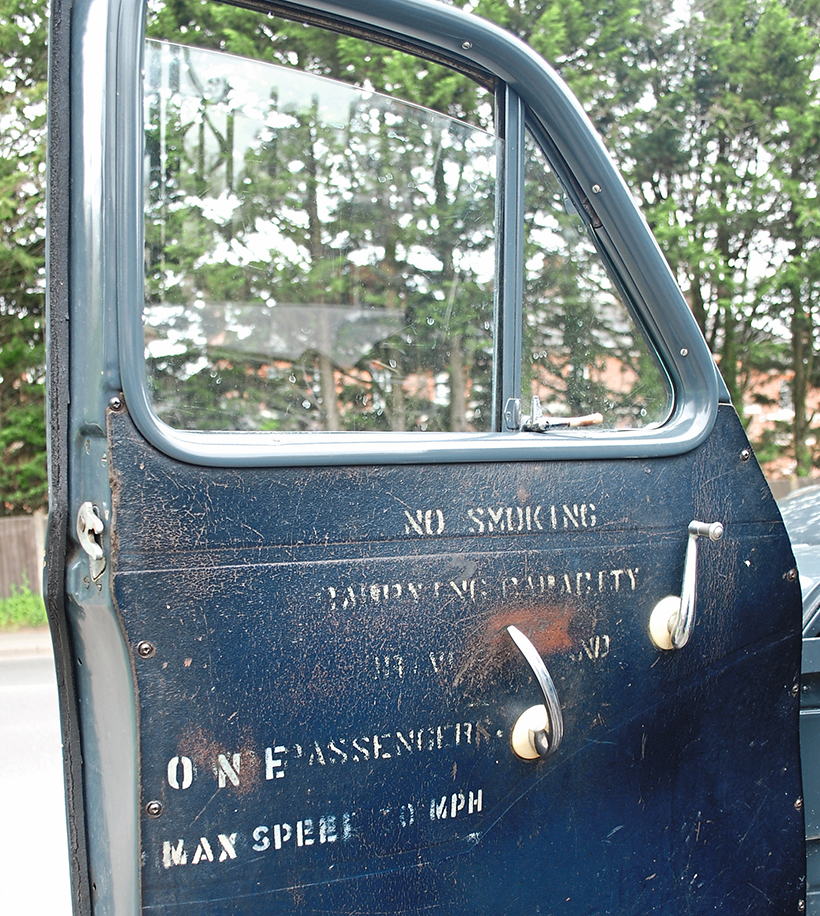
Original RAF stencilling on the inside of the pick-up’s door survives.
There was just one problem. The photo was in black and white, so what colours were the service vans painted? Off-white over mid-blue was opted for, being Standard-Triumph’s house colours.
At this point, John became concerned that he didn’t have the old, buff logbook. When he sold the van, the previous owner had promised to send it to John, but never did. Various attempts were made to have the original registration re-allocated, but the DVLA was having none of it, compounded by Croydon registration records having been destroyed, and it looked like an age-related registration would be the result.
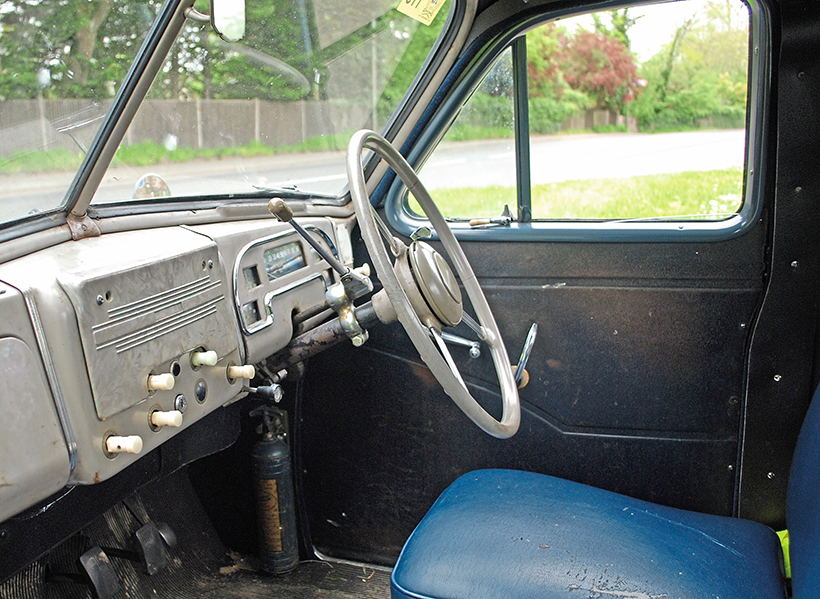
Dashboard, complete with the almost-obligatory column gearchange.
As a final long shot, John rang the phone number of the previous owner from 33 years earlier and, to his amazement, he answered the phone, still at the same address, very elderly but remembering selling the van. He responded that he probably did still have the logbook in the loft and would call back if he found it.
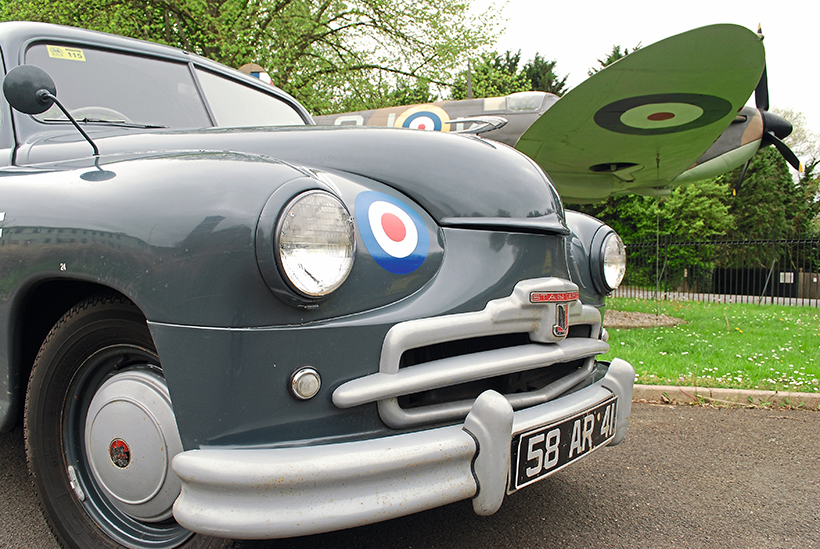
Front-end detail of the pick-up.
This he did, but insisted that he needed paying for it, and for a Vanguard bumper that he had. John was somewhat miffed at having to pay for something he should have been given years earlier, but had little choice and returned home with both logbook and bumper, £150 lighter. It was worth it, though, as the van was then able to keep its original number. The logbook also revealed that the original colours of the van were… cream and blue.
John then managed to find an old receipt from Carrs of Croydon, which showed the typeface used on the side of the vans in the Airport photo. The van was booked in with a sign-writer, Signsmith, in Emsworth at Chichester Harbour (who incidentally runs a Fordson E494C 5cwt van as his daily transport), who did an excellent job.
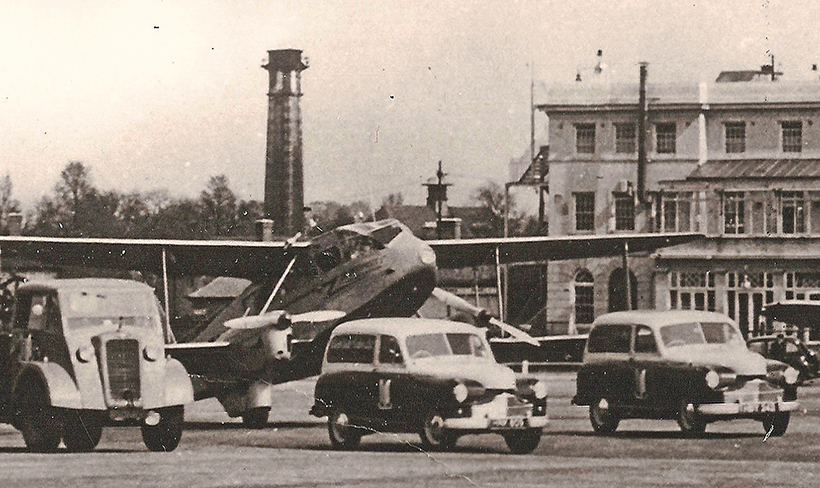
A 1950 photograph taken at the famous Croydon Airport, showing two Vanguard vans in Carrs livery.
While a large, Standard logo could be seen on the front doors, the old photo didn’t show the back of the van, so some artistic licence was needed. To break up the flat expanse of off-white on the rear doors, another Standard logo was added.
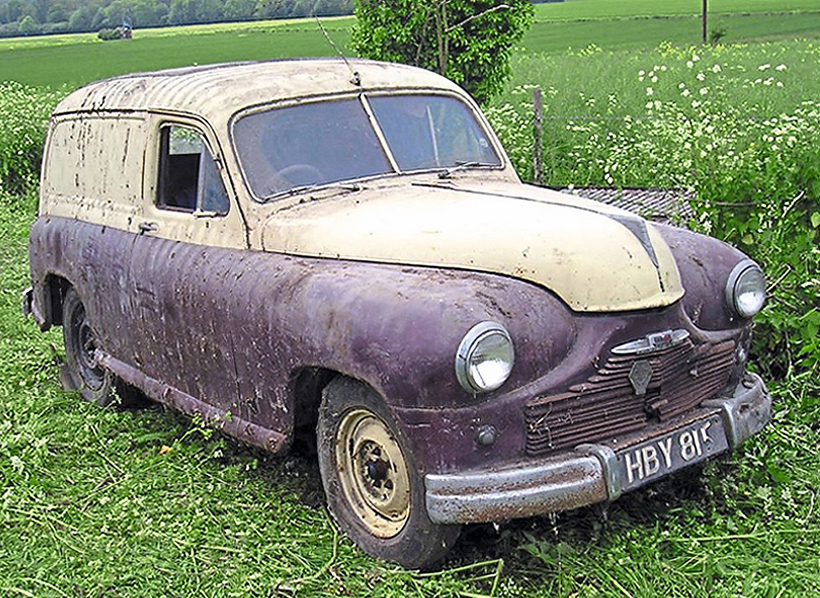
The van as pulled from John’s shed, before restoration.
Seeing the two vehicles together illustrates some of the differences between the early Phase 1 and the later Phase 1A, some of which were implemented for cost-saving reasons. The Phase 1 van has long doors extending to the bottom of the sills, a slightly higher bonnet line with the early low-profile emblem, three-piece front and rear bumpers, horizontal slatted multi-piece grille, pull-type door handles and the right-hand column change. The Phase 1A pick-up has doors which stop above the sills, a lower bonnet with decorative mascot, one-piece bumper, three-piece grille, push-button door handles and column change on the left of the steering wheel.

Rear view of the van, as found.
Mechanically, the Vanguards were largely unchanged. “There was a rod-operated clutch until the 1953 Phase 2, then a twin master cylinder hydraulic clutch, though you could end up with no brakes or clutch if one leaked!” Paul notes.
Paul, John and Phil are members of the Standard Motor Club. “It offers a lot of spares for the Vanguard. The supply of mechanical parts is getting better, with brake parts, ignition parts, hoses and windscreen rubbers,” explains Paul. “Body spares are more difficult, with only second-hand ones available. Fortunately, I have collected a lot over the past 40 years – I have about two tons of spares, including engines, bonnets, gearboxes and even two spare chassis saved by John from scrap cars.”

The pick-up, as found, from the front.
“The van is noisier than the pick-up, as sound reverberates around the metal body, even with carpet in the back. I tend to drive the pick-up the most, even more than my cars. The van was restored to be a ‘show queen’, but the pick-up gets used. I towed a motorbike trailer over to France with it for the D-Day commemorations. The pick-up will cruise at 50-55mph, but the van at 45mph.”
Originality was key for both restorations but, to supplement the working semaphores, flashing indicators were added for safety, which can be folded away out of sight on the van when it’s parked.
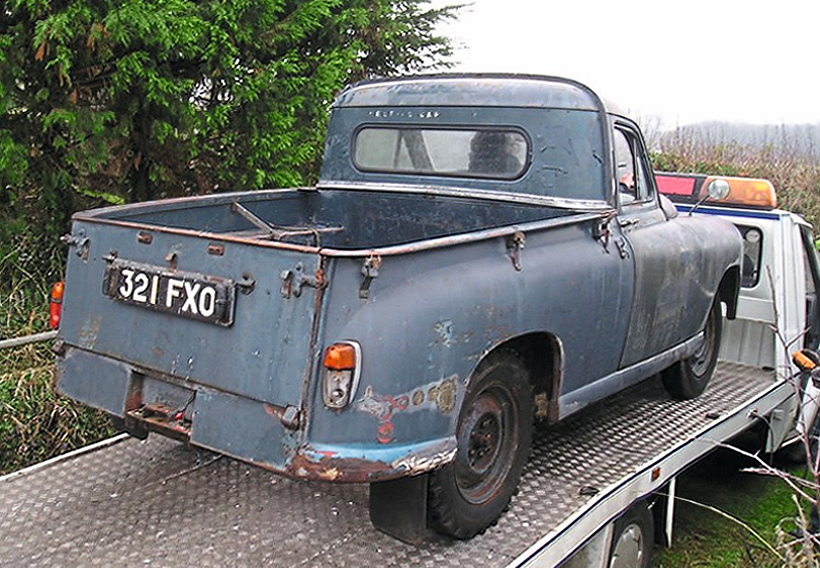
The pick-up loaded and ready to be moved.
John and Paul reckon there are about four or five vans still on the road, and around six pick-ups (mostly later ones with the extended rear overhang), so these are rare vehicles. Both have appeared on the HCVS London to Brighton run.
With thanks to RAF Biggin Hill Museum for access for the photo location, to Paul Robins, to John Shearman and to Phil Gates for the old photos.
This feature comes from the latest issue of Classic & Vintage Commercials, and you can get a money-saving subscription to this magazine simply by clicking HERE
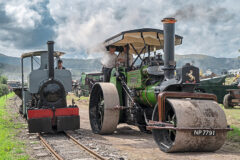
Previous Post
Welland Steam & Country Rally, 2023

Next Post
Brilliant Craigs Tractor Enthusiasts’ working day



